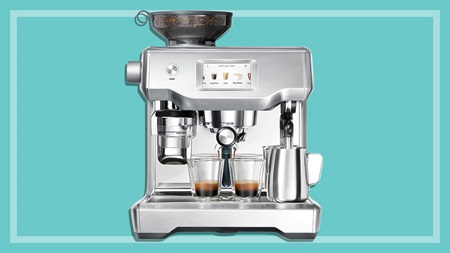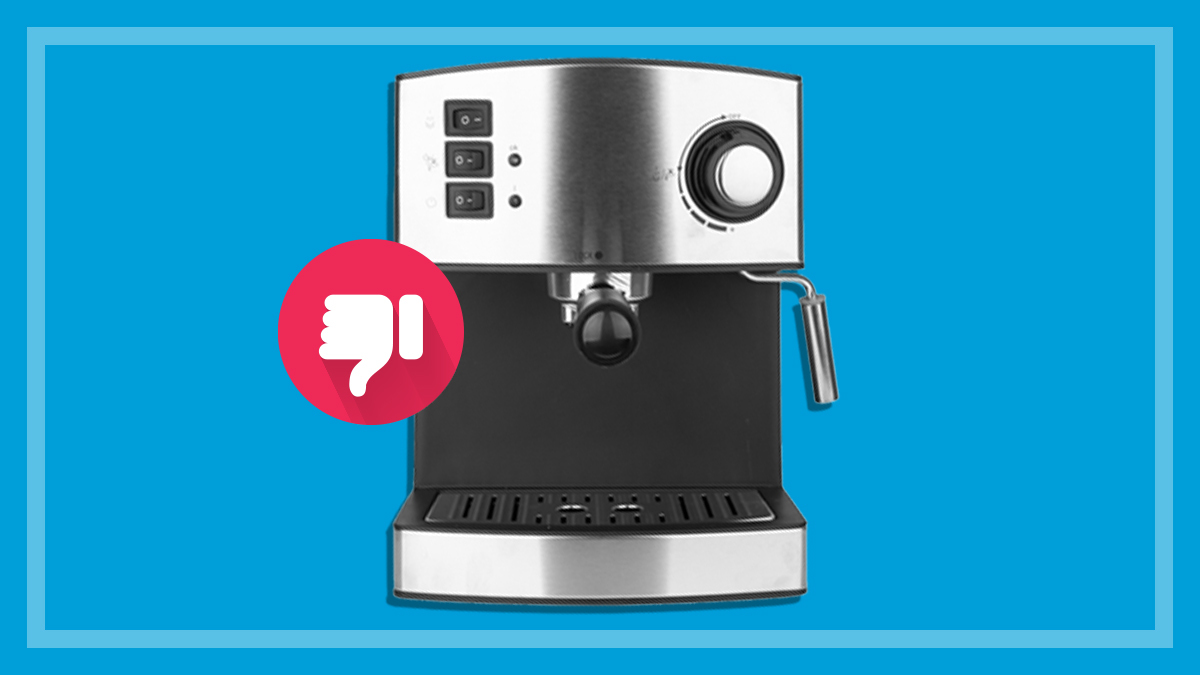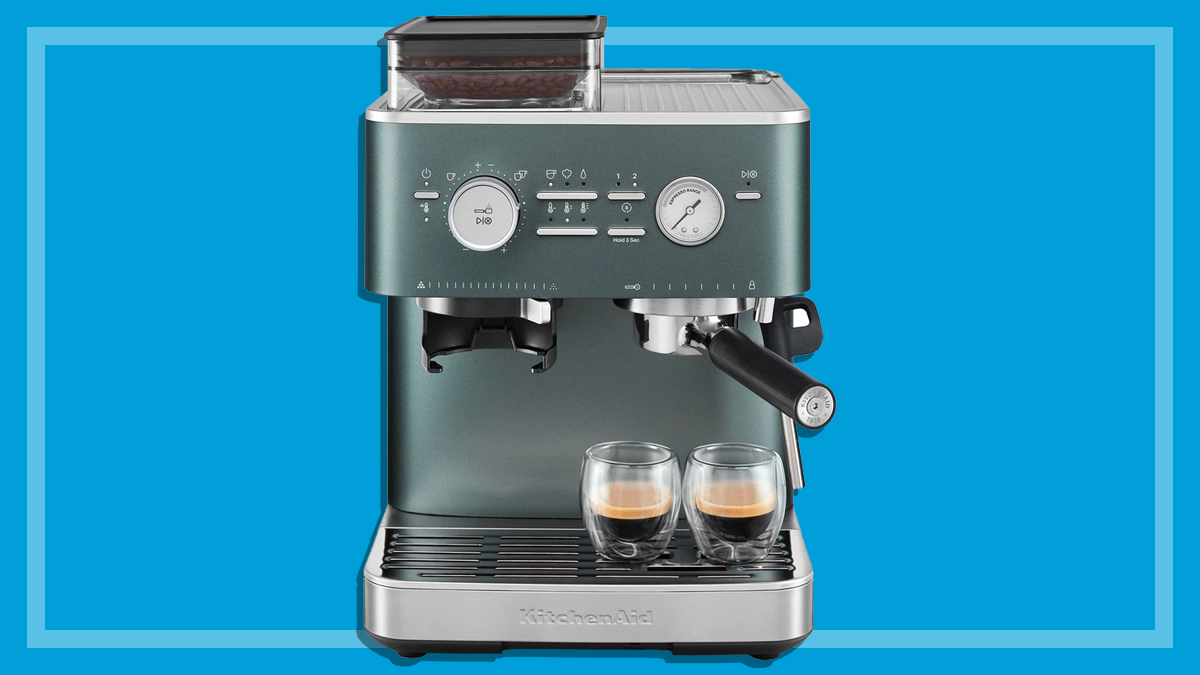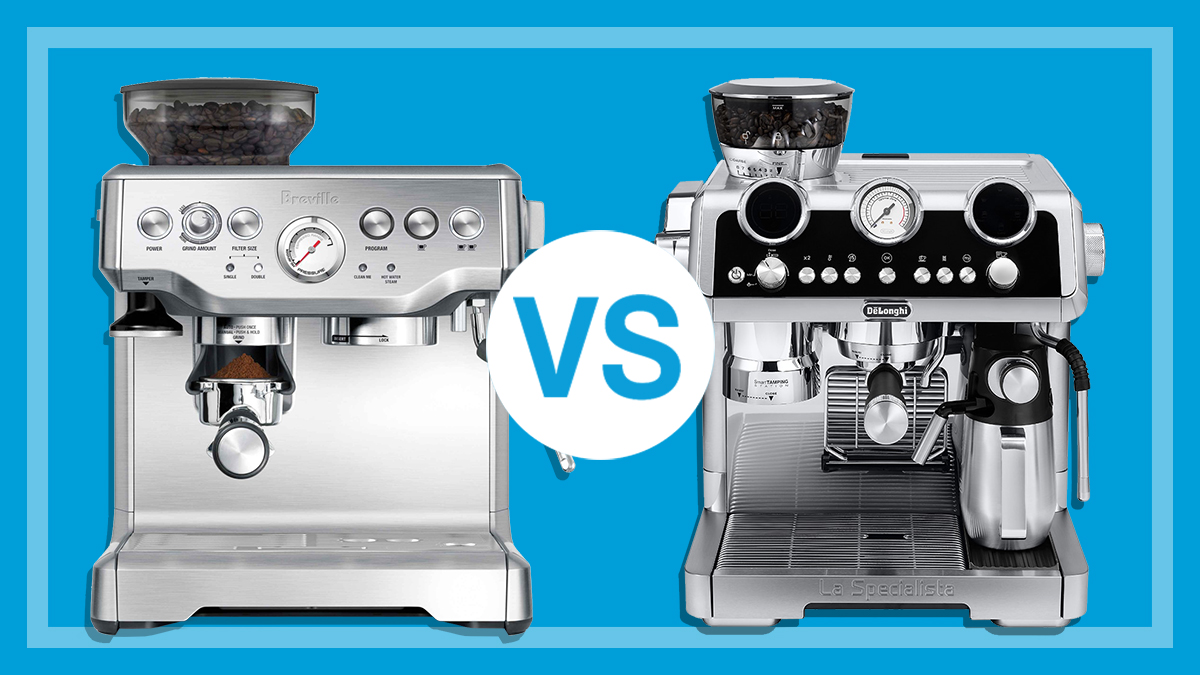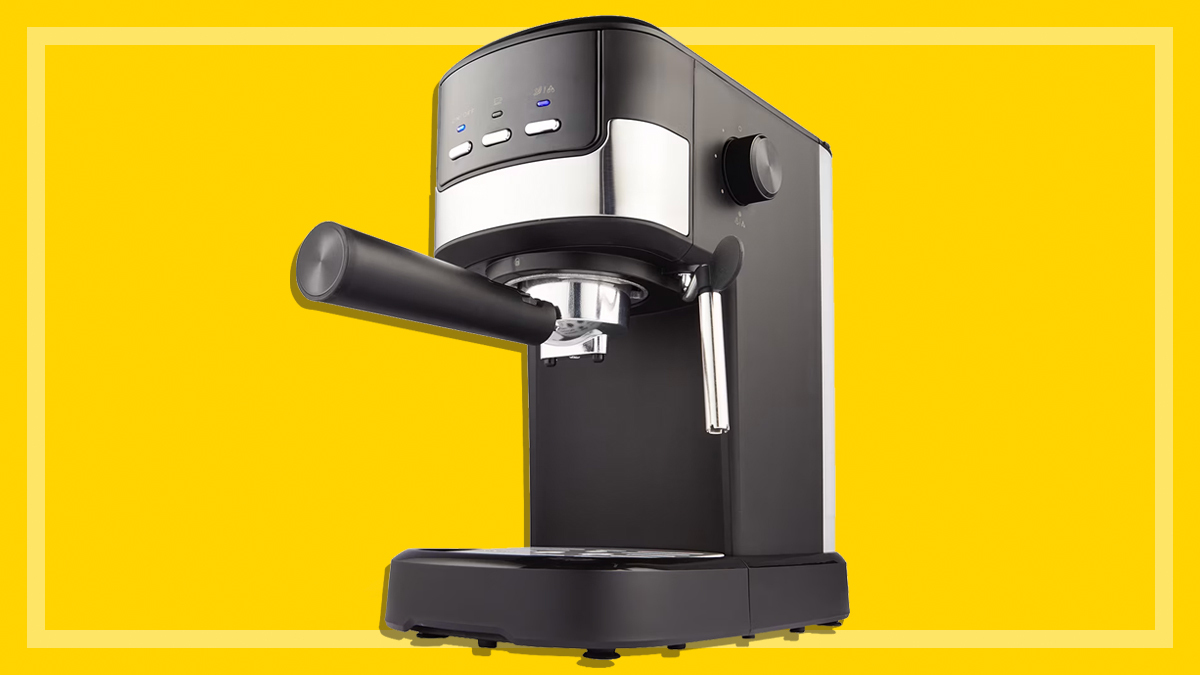Get our independent lab tests, expert reviews and honest advice.
Should you buy a coffee machine with a cold brew setting?
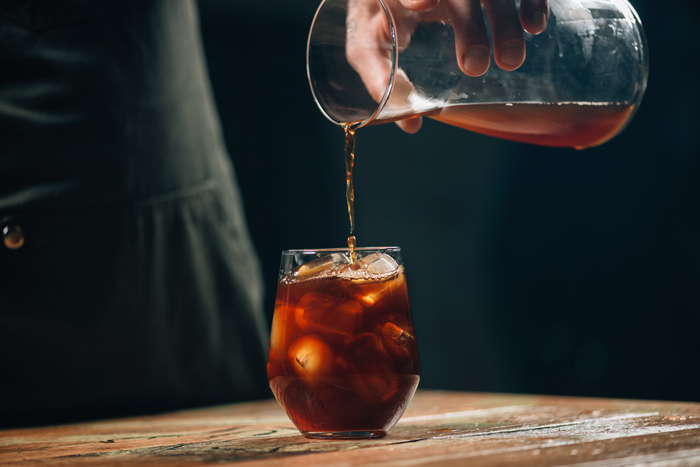
Cold brew coffee is increasingly turning up on cafe menus, offering coffee lovers a refreshing alternative to their favourite hot drink. Known for its smooth, low-acidity taste profile, cold brew has become a popular way to get a caffeine fix during the warmer months.
On this page:
- What is a cold brew coffee?
- Cold brew vs iced coffee: What's the difference?
- How to make cold brew coffee at home, without a machine
- Espresso machines with cold brew functionality
- How we taste test coffee in our coffee machine test
- CHOICE verdict: Are espresso machines with cold brew settings worth it?
As demand for this brew grows, it’s no surprise that coffee machine manufacturers are jumping on the bandwagon. We’re now seeing home espresso machines spruiking cold brew settings, with claims they can bring cafe-quality cold brew into the comfort of your own home at the touch of a button.
But can a domestic appliance deliver a cafe-quality cold brew?
We don’t assess the cold brew settings in our espresso machine testing, but here we’ll take a look at which brands offer this innovation, and ask our experts if they can live up to the hype.
What is a cold brew coffee?
Cold brew coffee isn’t just a regular coffee shot that’s been cooled down, like in an iced coffee. It’s created using a totally distinct method of coffee extraction.
To achieve a cold brew, coffee beans need to be coarsely ground. They are then steeped in cold (or room temperature) water for an extended period of time, typically 12–24 hours.
Cold brew coffee isn’t just a regular coffee shot that’s been cooled down … It’s created using a totally distinct method of coffee extraction
The grounds are then filtered out using a paper filter, fine mesh sieve or other filtration method. This process produces a brew that tastes smoother, with less bitterness and acidity than a regular hot espresso.
“A cold brew requires more coffee grounds than what is typically used to make hot espresso. This is so you don’t end up with a cold brew that’s weak and watery,” says CHOICE coffee machine expert Adrian Lini.
This also explains why you tend to pay more for this type of coffee at your local cafe.
Cold brew vs iced coffee: What’s the difference?
But isn’t a cold brew just like drinking an iced coffee?
Actually, while they are both served cold, the two are quite different drinks in terms of the way they’re brewed and the flavour they produce. So if you’re expecting a cold brew to taste like an espresso over ice, you might be surprised by the difference.
Iced coffee is made using a hot shot of espresso, but with ice and cold milk added to it to make it refreshingly cool. It still has the bitter and acidic flavour of a hot espresso but without the heat, and some of those flavours are masked by the addition of milk (and in some cases, sugar).
If you’re expecting a cold brew to taste like an espresso over ice, you might be surprised by the difference
Because of cold brew’s comparatively milder flavour, drinkers are less likely to add as much sugar and milk to cut through the bitterness, meaning it may be a lower calorie option for some.
It also has an extended shelf life and can keep for up to two weeks in the fridge. In comparison, regular coffee starts to go stale soon after it’s made thanks to an aromatic compound that degrades as it cools.
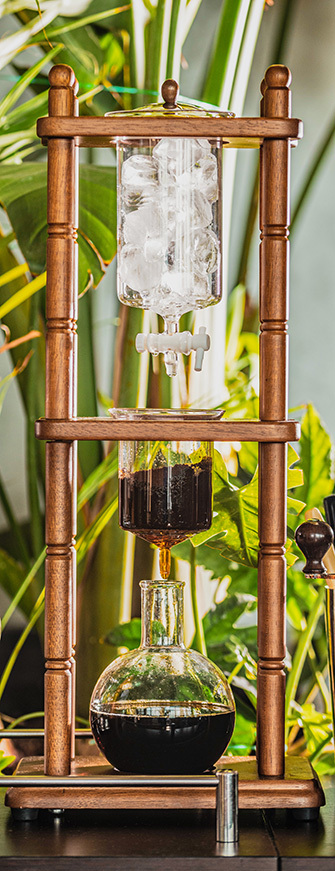
Is cold drip the same as cold brew coffee?
Not quite, although they’re similar in that they only use cold water and they both take up to 24 hours to make.
Where making cold brew involves putting all the coffee and water into a vessel at once, cold drip works by slowly releasing the water through the ground coffee, one drip at a time – as the name suggests.
And where espresso machines use pressure from the build-up of steam to force hot water through the ground coffee, cold drip systems rely solely on gravity to move the water.
Cold drip systems tend to be quite elaborate set-ups involving glass piping, and they can be quite expensive, running into the hundreds of dollars.
For the same price, you could consider a good-quality espresso machine with a cold brew setting.
Cold brew vs iced coffee: What’s the difference?
Cold brew
Brewed in cold water
Brew time: 12–24 hours
Smoother taste
Course coffee grounds needed
Naturally sweeter
Can last for up to 2 weeks in the fridge
Iced coffee
Brewed hot then poured over ice
Brew time: minutes
Stronger bitter flavour with more acidity
Fine coffee grounds needed
Sweetened with sugar and milk
Best consumed straight away
How to make cold brew coffee at home, without a machine
There are dedicated cold brew coffee makers on the market, and now espresso machines that feature a cold brew function. But if you’re keen to give it a go at home without forking out for an appliance, all you need are two lidded jars or jugs and a coffee filter.
1. Grind the beans
First up, you’ll need your coffee beans ground more coarsely than you’d use for espresso. If you have a grinder at home, grind your beans on the coarse setting. If you’re buying from a roaster or cafe, ask them to grind it specifically for cold brew – they’ll know what to do.
Coffee that’s ground too finely can leave sediment in your coffee, which will create a muddy, bitter drink. Lack of sediment is one of the defining characteristics of cold brew and is what gives it that lovely light mouthfeel. Sediment is also food for bacteria, meaning it will reduce the lifespan of your cold brew.
You’ll need your coffee beans ground more coarsely than you’d use for espresso
If you only have access to pre-ground beans, don’t despair: it’ll still work, but you may need to play around with timing and brew it for less time. It’s not impossible, but you’ll need to experiment to get it right.
The smaller the grind, the less time it’ll take to steep – if you leave it too long you could end up with bitter coffee.
2. Mix the coffee grounds with water and leave to steep
Once you’ve got the ground beans, add them to a jar and mix with room temperature water. The coffee-to-water ratio can range from 1:4 or 1:8 (something you can have a play around with to achieve your desired level of strength and flavour once you’ve got a handle on the process).
Stir the water and coffee until it’s well combined and leave to steep for 12 to 24 hours.
3. Strain the coffee, cool, and enjoy
Strain the coffee into an empty jar using a coffee paper filter or a fine cloth.
You can also use a French press (aka coffee plunger), and in this case you won’t need to use a filter to strain the grounds out. Some baristas and home cold brewers like to filter their cold brew multiple times to remove any residual sediment and give it a ‘cleaner’ flavour.
Pop it in the fridge to cool, then dilute it with water or milk when you’re ready to drink it. Word on the street is you shouldn’t drink the straight concentrate – unless you want to be buzzy and jittery all day and into the night!
4. Storing your cold brew
Store any leftovers in a container and seal it well. By doing this, it can last in your fridge for up to two weeks.
Espresso machines with cold brew functionality
If you’re a fan of both hot- and cold-brewed coffee, an espresso machine with cold brew functionality could provide the best of both worlds.
As coffee culture has expanded to make cold brew more mainstream, manufacturers have started to add this functionality to their coffee machines, claiming they’ve created a way to make a cafe-quality cold brew within minutes.
We’ve noticed these features making their way into more and more machines, and while our expert Adrian doesn’t test these setting in our lab test, he says home baristas should not expect cafe-quality cold brews out of a home machine.
“These machines offer a quick alternative, making cold brew using a different method from your local barista, so you shouldn’t expect the same depth and complexity of flavour,” he explains.
“Coffee machines make cold brew by pushing room temperature water through the coffee grinds in the group head at a lower pressure than espresso, but still much higher and faster than what traditional cold brew takes.”
If you’re a casual cold brew drinker, what a home espresso machine turns out may be enough for you. But if you’re a diehard enthusiast, you might find it subpar.
Adrian describes a cold brew from a home espresso machine as tasting “more like a weak room temperature espresso rather than a cold brew”.
Here are some of the machines we’ve tested with cold brew settings.
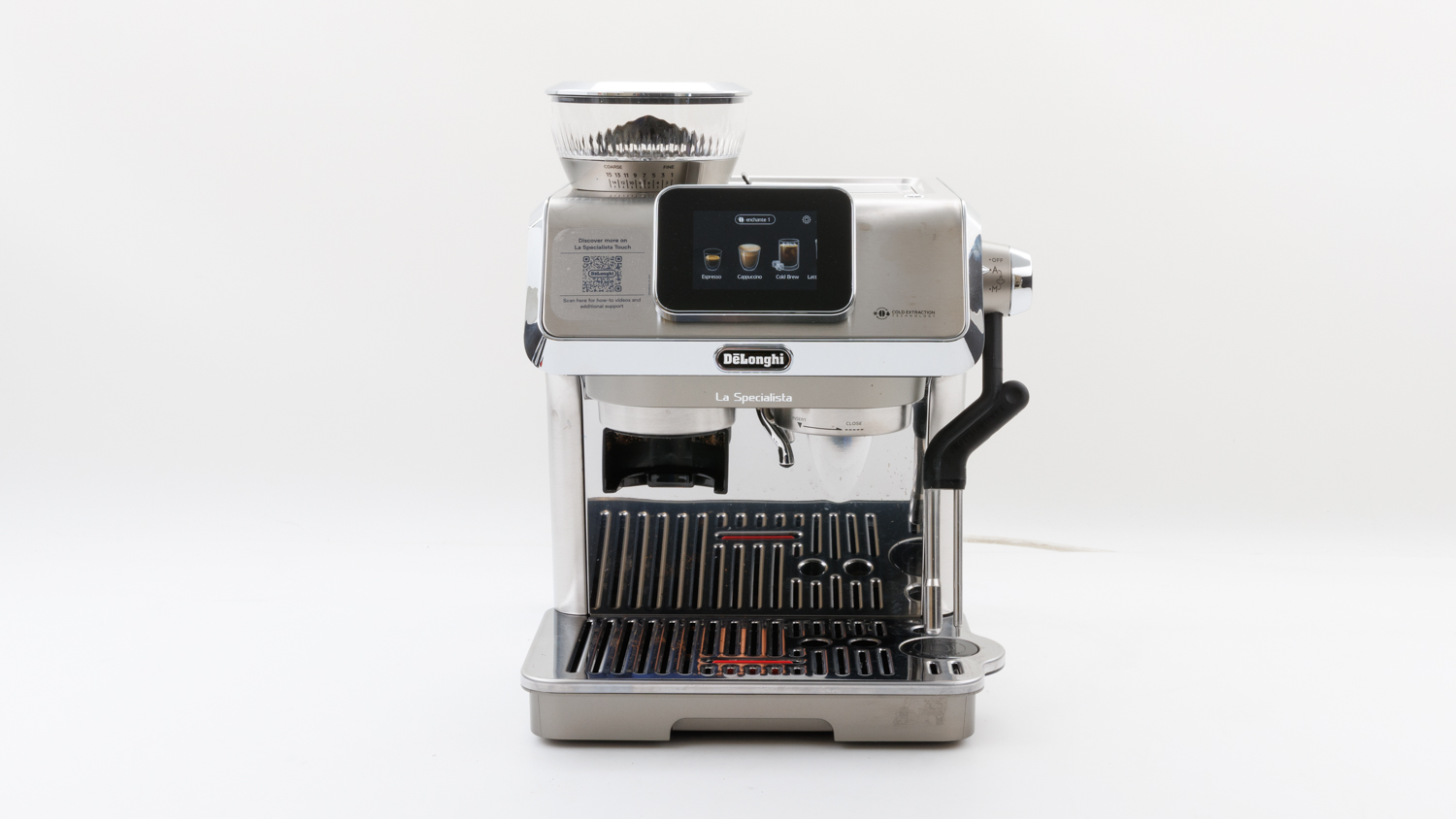
DeLonghi La Specialista Touch (EC9455)
- Price: $1099
- Taste test score: 85%
- Type: Semi-automatic
This semi-automatic machine comes with a large touchscreen display that takes you step-by-step through the coffee-making process. It also features an inbuilt grinder with 15 grind settings and an integrated tamper.
It also uses what DeLonghi calls “cold extraction technology” to deliver a cold brew in under five minutes.
This machine was overall an impressive performer, but the stand out was its very good taste test result. The automatic milk frother produced inconsistent temperature and large bubbles, but manually frothing the milk achieved a good result. It also took only seven seconds to heat up, meaning you can deliver a cup of coffee quickly.
For the full test results, see the DeLonghi La Specialista Touch (EC9455) review.
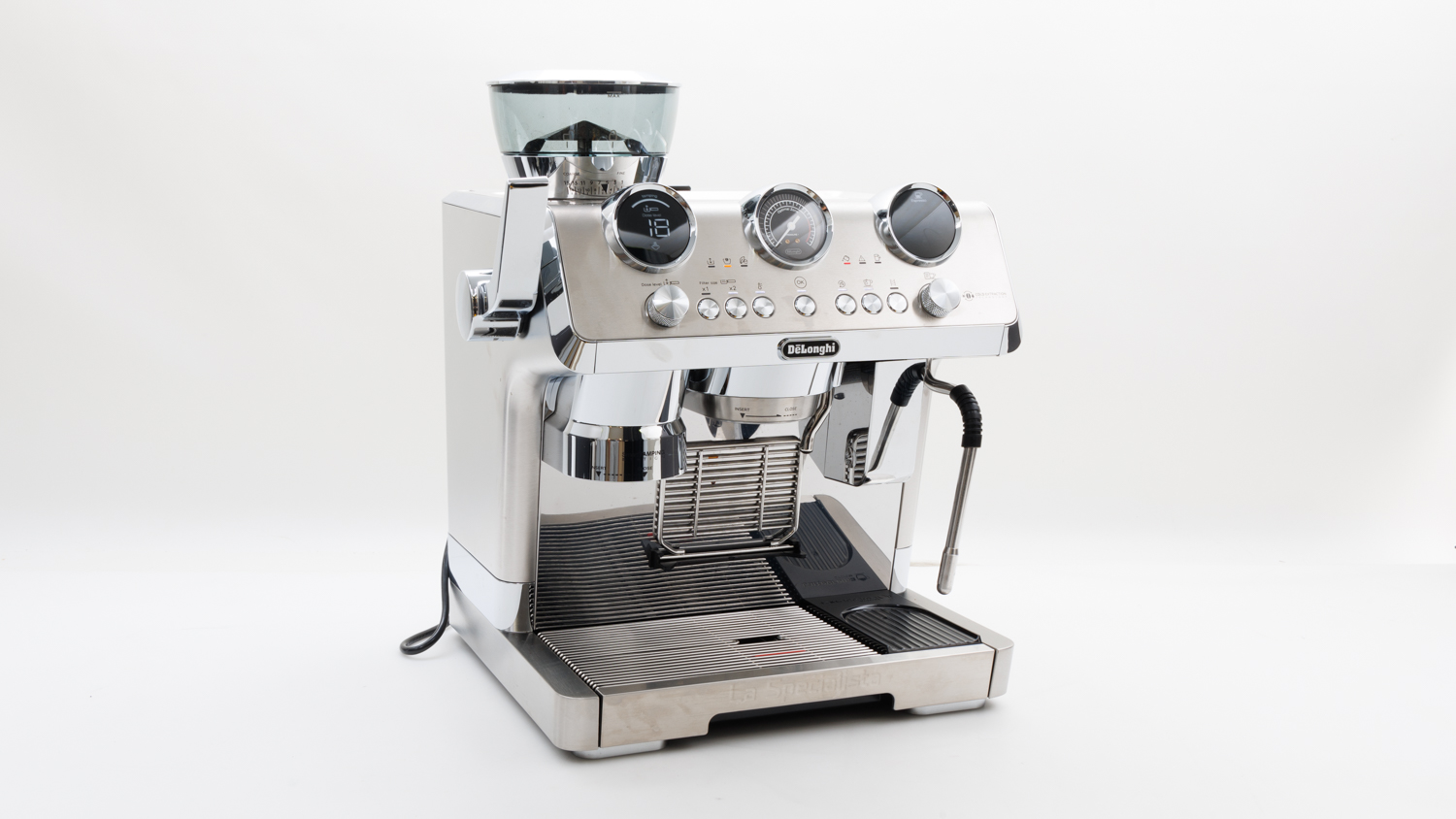
DeLonghi La Specialista Maestro Cold Brew (EC9885)
- Price: $1399
- Taste test score: 80%
- Type: Semi-automatic
For over $1000, this semi automatic machine comes with all the bells and whistles. Its inbuilt grinder has 15 grind settings, so there are plenty of options to get the right grind. It also comes with a “smart tamping station”, so you also don’t have to worry about getting the right tamp.
One of its eight pre-set functions is cold brew, promising to deliver a refreshing brew in under five minutes, using what DeLonghi calls “Cold Extraction Technology”.
While its many buttons can make the machine a bit overwhelming to use, it had a “very good” taste test result and provides lots of options for a variety of coffee beverages.
For the full test results, see the DeLonghi La Specialista Maestro Cold Brew (EC9885) review.
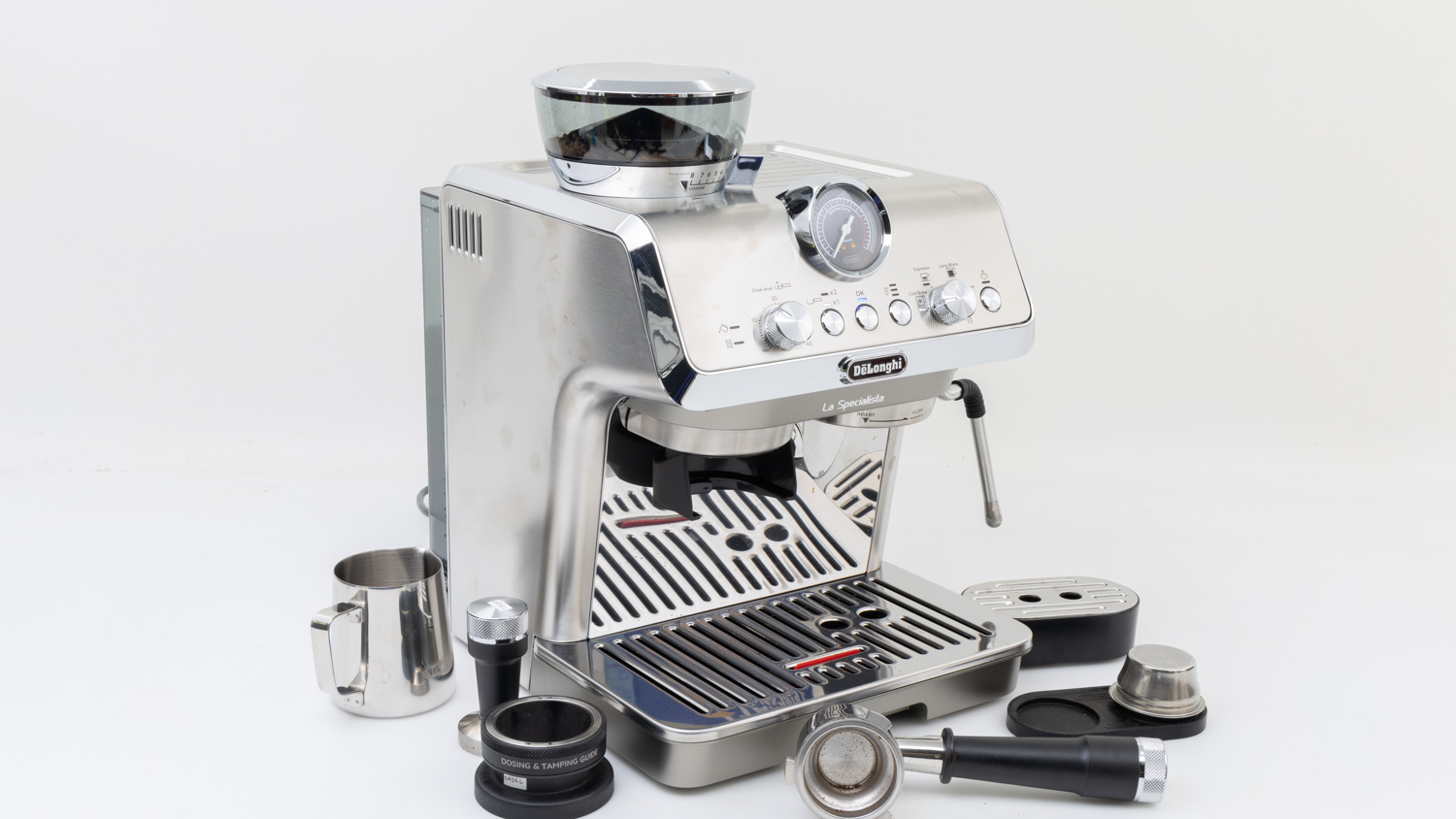
DeLonghi La Specialista Arte Evo EC9255
- Price: $699
- Taste test score: 75%
- Type: Semi-automatic
This semi-automatic coffee machine has an in-built grinder so you can use freshly ground beans for every cup. It has a pre-set function for cold brew, as well as settings for espresso, long black and hot water, where you can tweak the grind, dose, water temperature and extraction time to give you more control over the end result.
The DeLonghi takes around five minutes to deliver a cold brew, still a far cry from the 12 to 24 hours that cold brew usually steeps for. The instructions recommend using a grinder setting between 4 and 6.
In our coffee machine tests, it scored 75% for taste, although again this is for espresso rather than cold brew.
For the full test results, see the DeLonghi La Specialista Arte Evo EC9255 review.
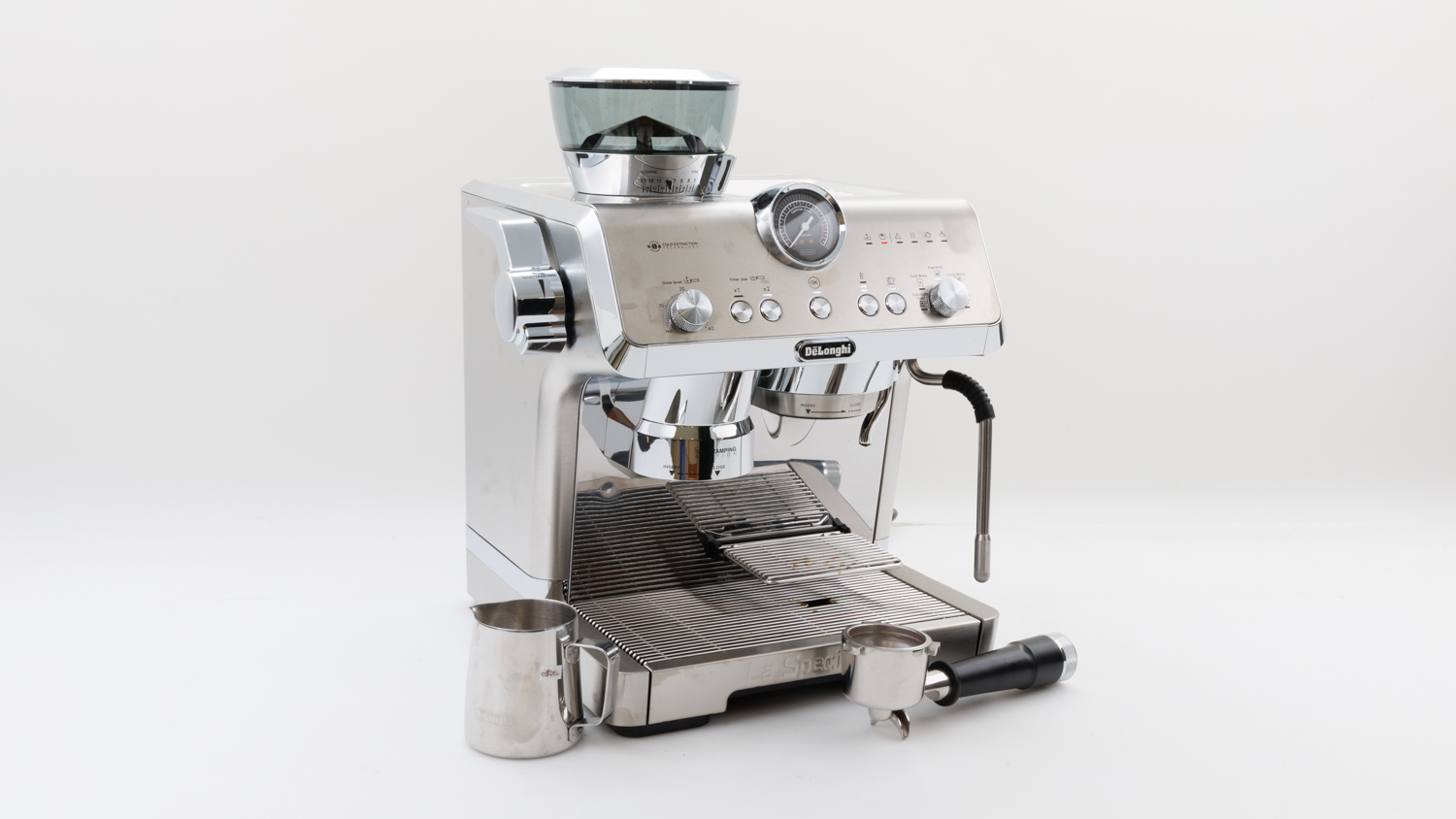
DeLonghi La Specialista Opera (EC9555)
- Price: $799
- Taste test score: 70%
- Type: Semi-automatic
This machine from DeLonghi has an integrated grinder with 15 grind settings as well as an integrated tamper. It also features five pre-set drink functions so you can choose between espresso, Americano, coffee, cold brew or ‘espresso cool’.
It was rated good for taste but only OK for coffee temperature consistency across our test of four consecutive cups of coffee.
We also found the machine to be quite light, which means you might need to keep one hand on the machine to stop it from moving on the bench when locking and unlocking the group handle.
For the full test results, see the DeLonghi La Specialista Opera (EC9555) review.
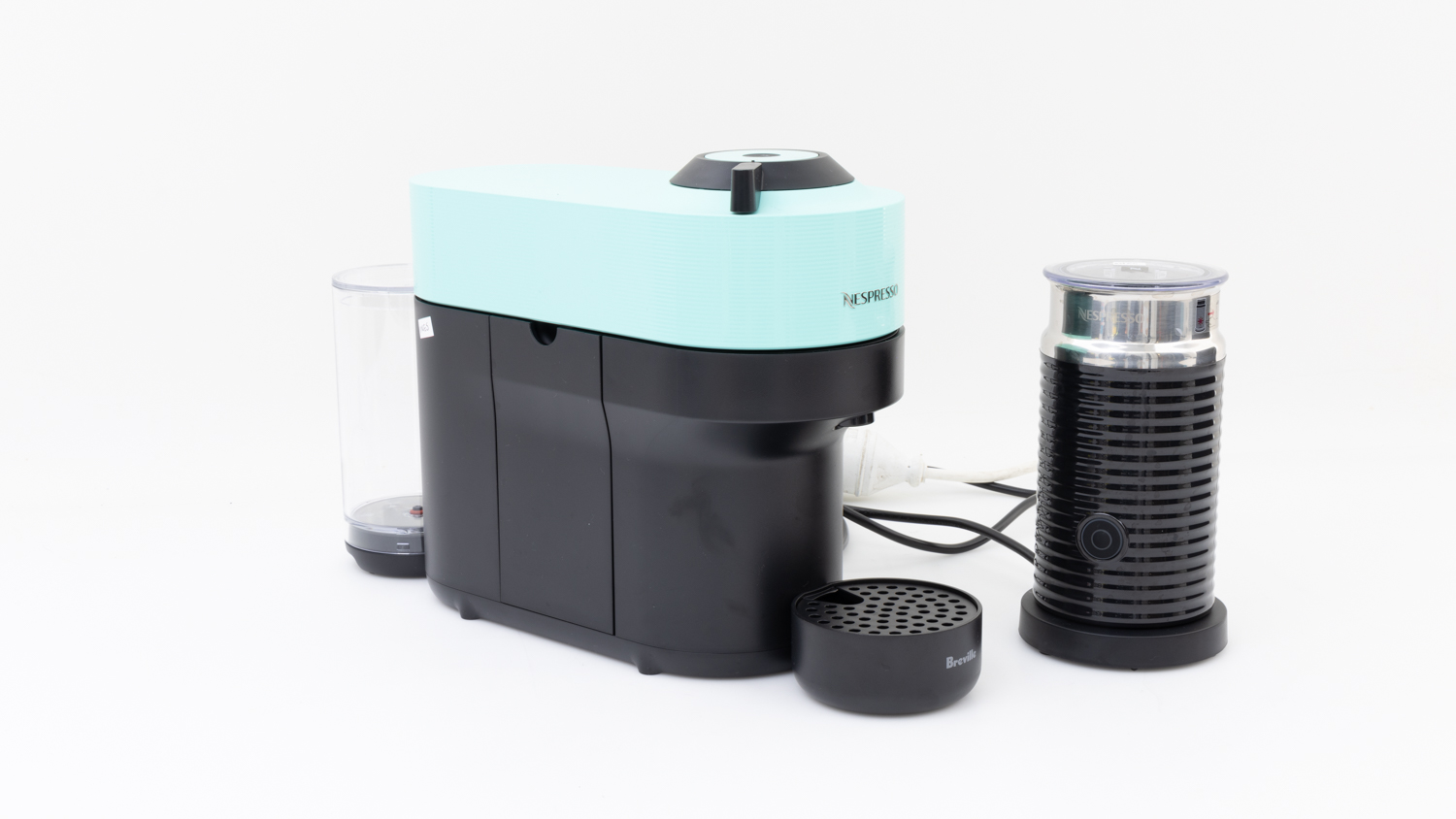
Breville Nespresso Vertuo Pop + Aeroccino 3 Bundle BNV150
- Price: $319
- Taste test score: 50%
- Type: Capsule
Even manufacturers of capsule machines are jumping on the cold brew bandwagon. Wondering how manufacturers fit cold brew technology in a capsule machine?
Nespresso says it’s inspired by the “hot bloom” method, a process whereby hot water is used in the first seconds of the brewing process, before switching to cool water to achieve the distinct cold brew sweetness. The Vertuo uses “Centrifusion Technology” to deliver a cold brew in minutes. The capsules will cost you $1.73 per capsule (or $12.11 for a pack of 7).
Bear in mind that when we tested this machine’s espresso, it only scored 50% in our taste test.
For the full test results see the Breville Nespresso Vertuo Pop + Aeroccino 3 Bundle BNV150 review.
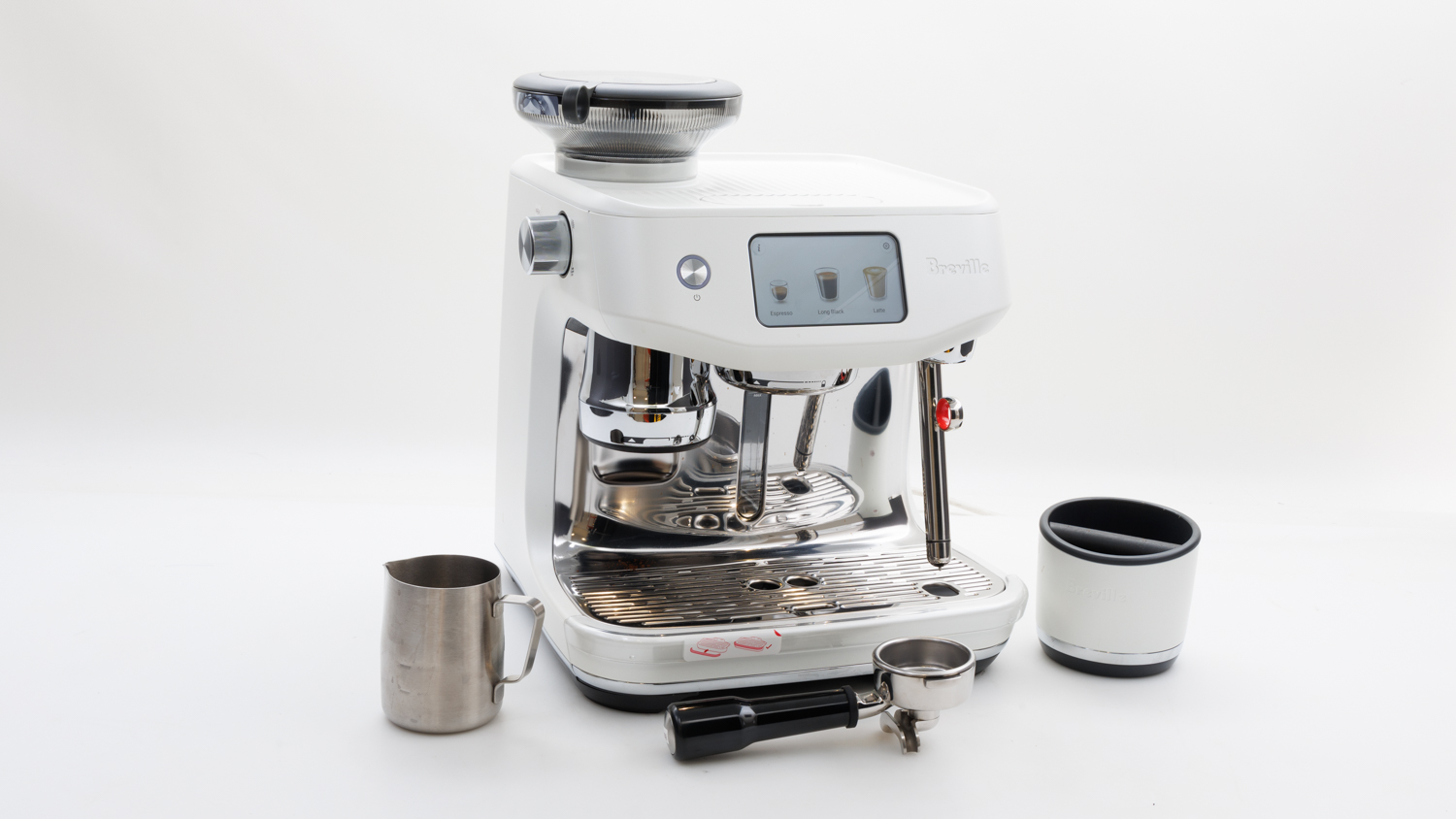
Breville The Oracle Jet (BES985)
- Price: $3399
- Taste test score: 70%
- Type: Semi-automatic
The Oracle Jet comes with an integrated burr grinder that has 45 grind settings. It also automatically grinds, doses and tamps the coffee ready for extraction. It recommends the grind setting depending on extraction time, making it easy to learn how to make a good espresso.
Breville claims the cold brew function on this machine extracts the brew in under three minutes.
This machine is extremely user-friendly, with a large touch screen that provides a very clear and detailed visual guide. But at over $3000, this easy-to-use functionality comes at a price.
For the full test results see the Breville The Oracle Jet (BES985) review.
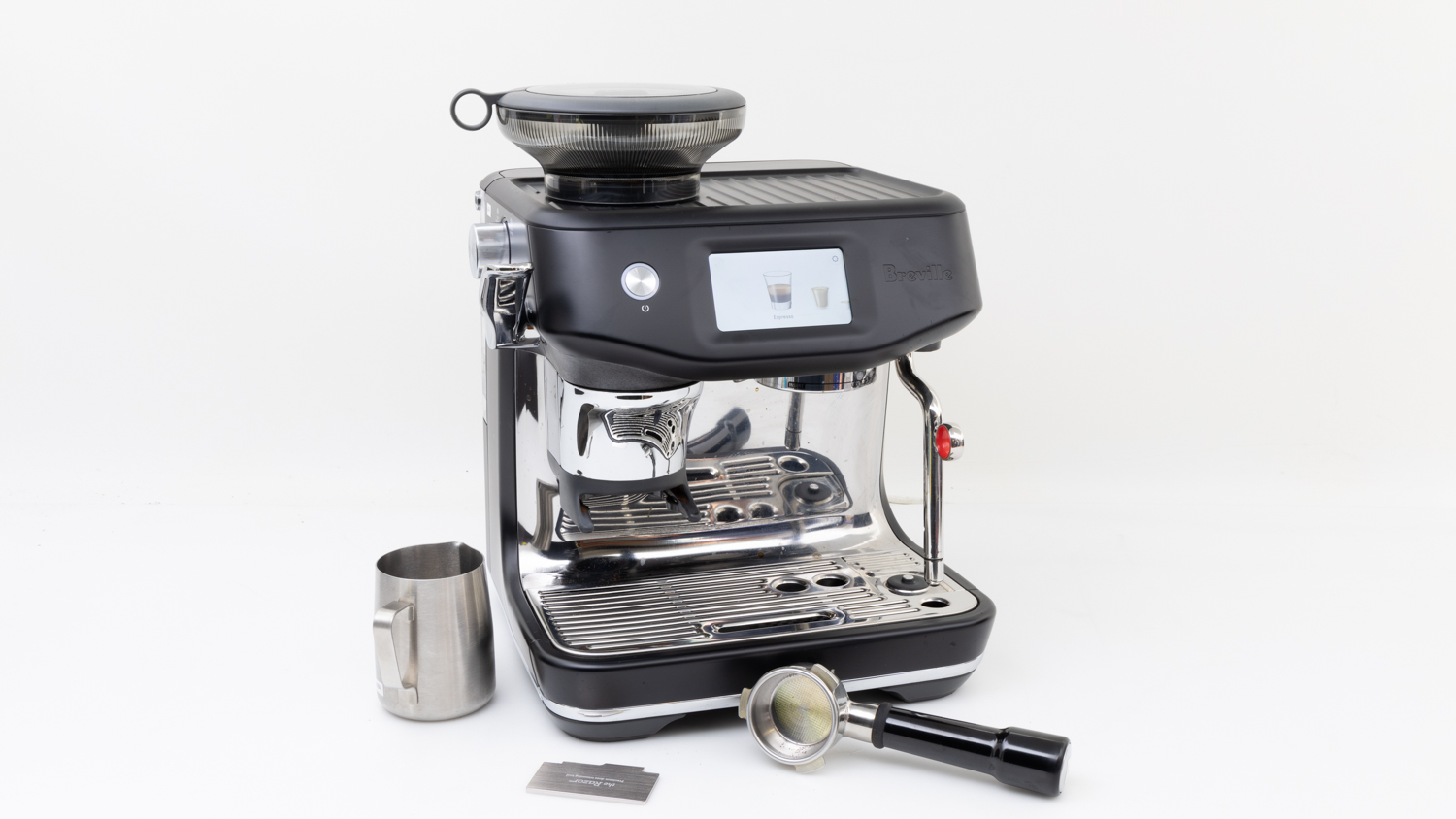
Breville The Barista Touch Impress (BES881)
- Price: $1999
- Taste test score: 80%
- Type: Semi-automatic
Like the Oracle Jet, this machine automatically grinds, doses and tamps. It also has a digital display that is user friendly, helping you to make better coffee by giving live tips as the coffee is being made.
During testing, we ran into issues with the default volume, which was inaccurate and needed some adjustments. However, our taste test produced a very good result.
Breville claims its cold brew is extracted in under three minutes, using lower temperatures to reduce acidic notes while producing a light and smooth flavour profile that’s typical of a cold brew.
For the full test results, see the Breville The Barista Touch Impress (BES881) review.
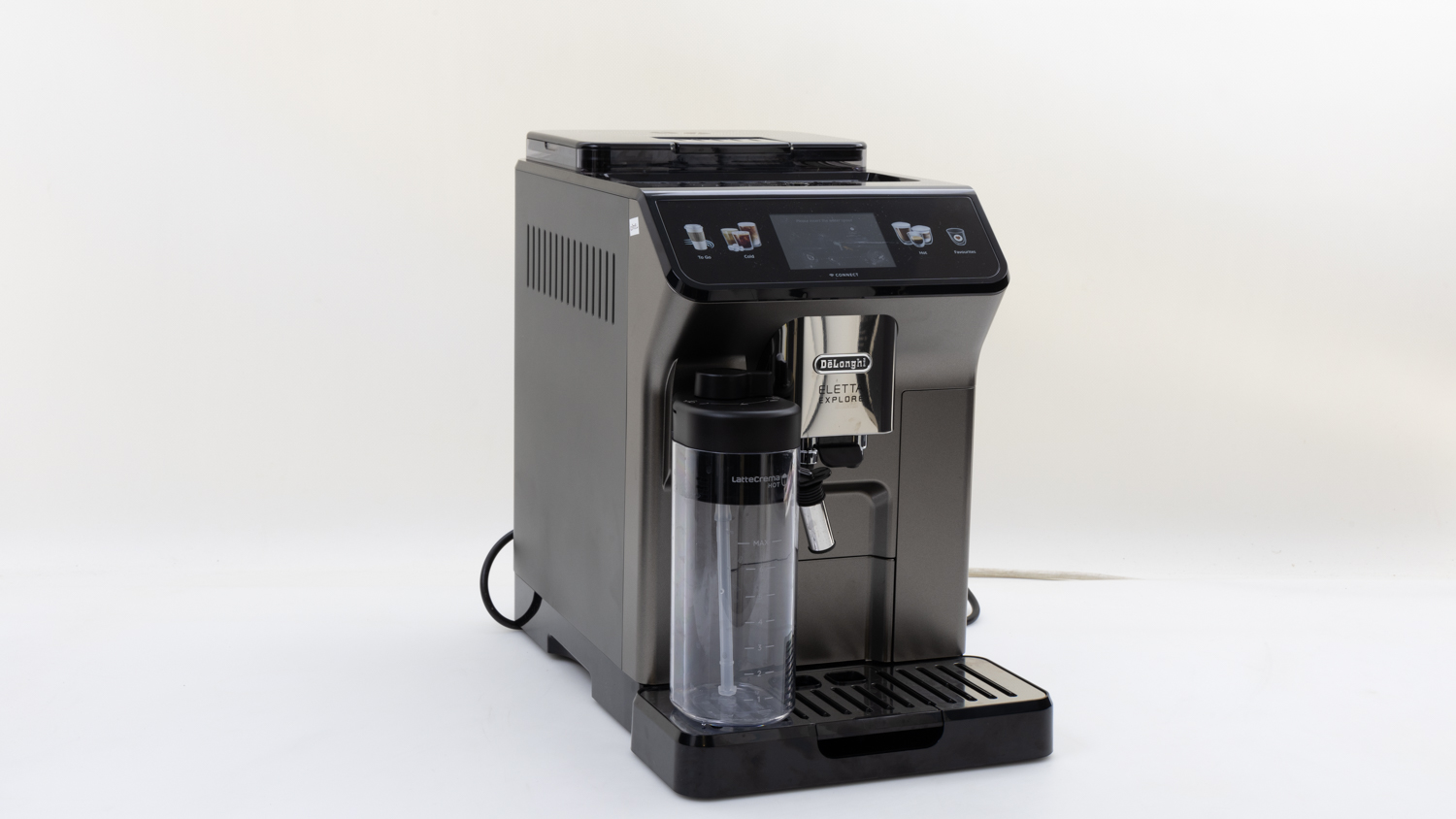
DeLonghi Eletta Explore Titanium ECAM450.86.T
- Price: $1799
- Taste test score: 75%
- Type: Automatic
This fully automatic machine also features DeLonghi’s Cold Extraction Technology. All you need to do is select the cold brew setting and the machine will deliver a cold brew in under five minutes.
The machine has an intuitive digital display, allowing users to easily change most settings and it even offers multiple user profiles where you can save your personalised settings. It also has a “Bean Adapt” feature that provides interactive tips and instructions to help guide users to a better espresso.
For the full test results, see the DeLonghi Eletta Explore Titanium ECAM450.86.T review.
How we taste test coffee in our coffee machine test
When we test manual, semi-automatic, capsule and automatic coffee machines, Adrian puts every product through our in-house taste test.
We recruit the help of three coffee experts to judge a shot of hot espresso from each machine, checking the colour and thickness of the crema, aroma, flavour, mouthfeel (for example, creaminess or wateriness) and aftertaste.
Since cold brew settings are a relatively new addition to coffee machines, a shot of cold brew isn’t subjected to our expert panel for tasting.
In-house cold brew taste test
In 2023 we asked 10 CHOICE coffee drinkers to taste three types of cold brew – from a cafe, a pod machine and a semi-automatic machine – and tell us which they preferred.
More akin to a watered-down espresso
The general consensus was that the coffee from home machines was more akin to a watered-down espresso than a proper cold brew coffee.
However, our taste testers said the semi-automatic machine was slightly better for taste than the cold brew offered by the capsule machine.
CHOICE verdict: Are espresso machines with cold brew settings worth it?
“While the introduction of cold brew settings on home coffee machines sounds like an inviting innovation, it seems to be more of a marketing gimmick rather than a meaningful feature,” says our coffee machine tester Adrian Lini.
“Cold brew settings aren’t aimed at avid enthusiasts, but rather casual cold brew drinkers, allowing you to expand your horizons and experiment with different coffee styles.”
It seems to be more of a marketing gimmick rather than a meaningful feature
CHOICE coffee machine tester Adrian Lini
For lovers of cold brew, the cold brew setting on a home coffee machine may very well miss the mark and you might be better off looking at a dedicated cold brew coffeemaker. Even simple DIY methods can give more depth of flavour, and they require very little in terms of equipment.
“A true cold brew takes time, something that machines taking mere minutes cannot authentically achieve,” Adrian says.
We’ve tested over 60 manual, semi-automatic and capsule machines in our labs. To see how they perform and what features they come with, take a look at our home espresso coffee machine reviews.
Alternatively, you may be interested in one of the 25 fully automatic coffee machines we’ve tested.

